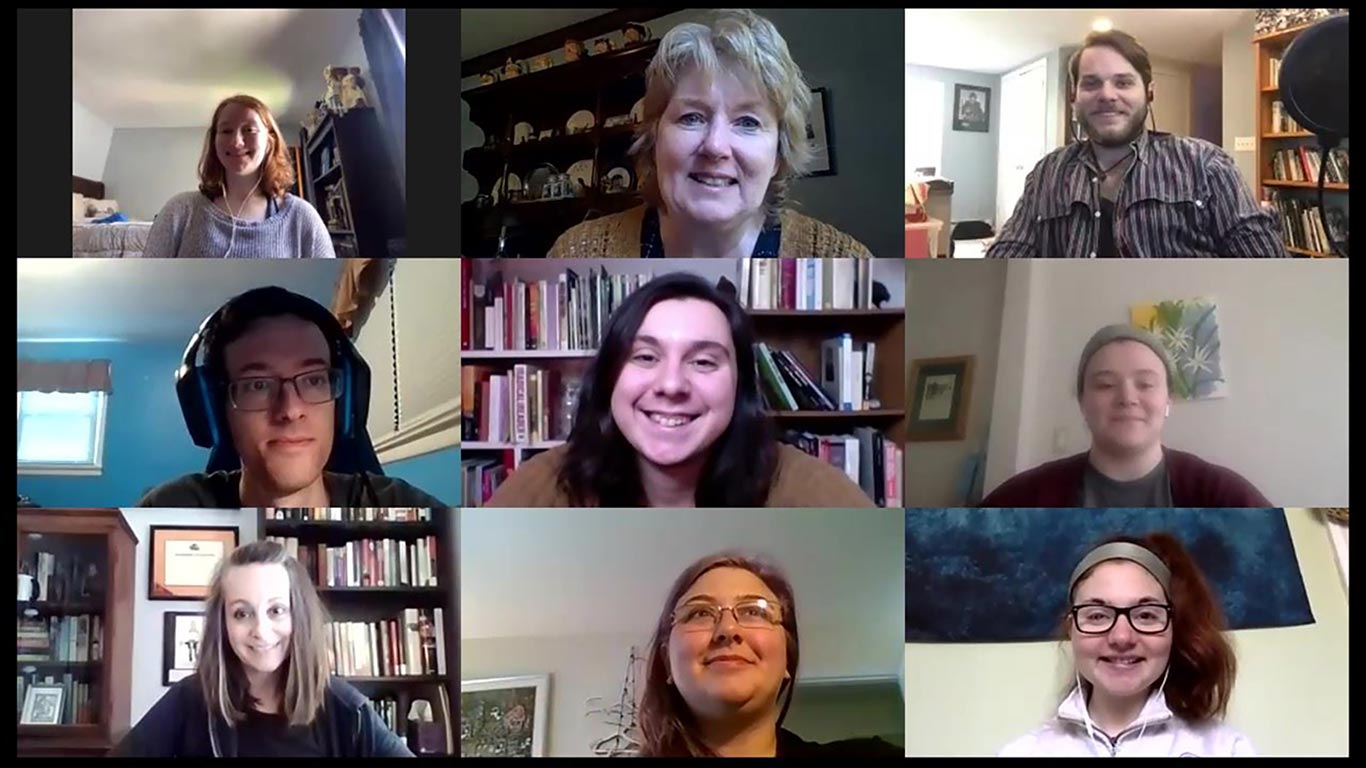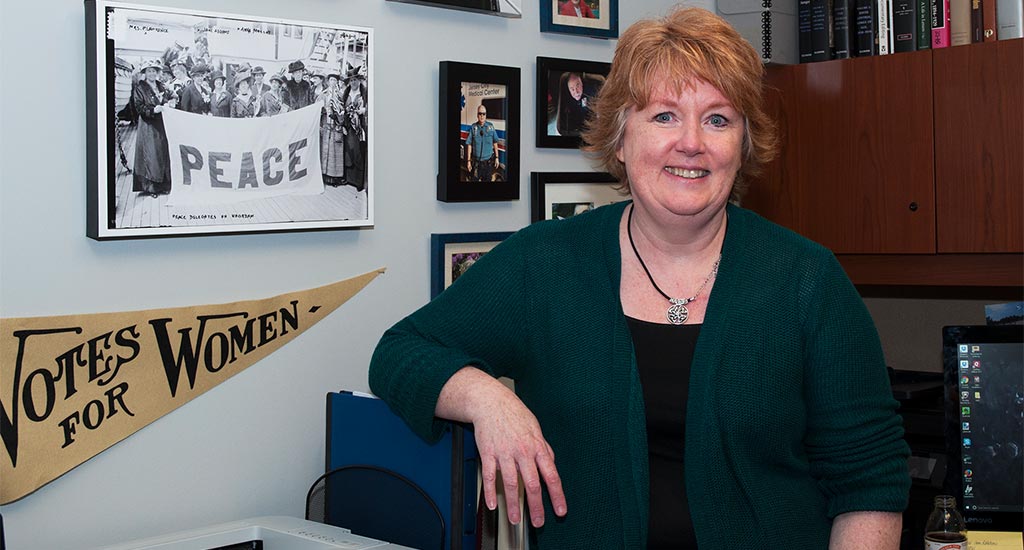Campus News | Long Read
Digital Humanities in the Era of Covid-19:
How initiatives, such as the Jane Addams Papers Project, have continued to make progress
by Teri Gatto | Winter 2021

The work of the Jane Addams Papers Project continued this year as Cathy Hajo met virtually with the students working with her on the project.
“Five years ago, The Jane Addams Papers Project, which was archived at Duke University, was in need of a new home,” says Susan Hangen, Interim Dean, School of Humanities and Global Studies at Ramapo College.
A prominent figure in the history of social work, the U.S. women’s suffrage movement and peace advocate, Jane Addams was co-founder of Hull House, which provided social and educational opportunities to working class people in Chicago, many of whom were immigrants. She was also the first American woman to win the Nobel Peace Prize, in 1939.
Steve Rice, a professor of American Studies and former dean of the School of Humanities and Global Studies, and Cathy Moran Hajo, a Jane Addams scholar, were instrumental in bringing the Addams papers project to Ramapo College. Now Hajo, who is also a digital humanities pioneer, has embarked on a long-term effort to edit, digitize and publish the archive in both digital and print editions.
Digital humanities is the process of using digital tools that are broader than word processing, such as databases and hyperlinked texts, to create enhanced humanities works that are typically published online. Hajo leads a team comprised of three editors, a part-time proofreader and 10 student assistants, who are annotating and digitizing Addams’ extensive correspondence and writings, covering the years 1902-1935. The documents are freely available and searchable on the project website as the project progresses.
“We use the same interpretative, analytic, and conceptual skills we bring to the humanities, but we use digital tools to develop large corpuses of documents and make them easily searchable,” explains Hajo. “For example, we take advantage of software that can tell us which words are frequently used and figure out whether their meaning has changed over time.”
When the pandemic hit, the Jane Addams Papers Project was able to effectively pivot to working virtually, Hajo explained. “Our online systems can be accessed from home with an internet connection, so we had no real down time. Though many student jobs on campus were lost when we went virtual, we were able to maintain all our student employees through the spring, summer, and fall terms. We have continued to make steady progress, entering materials from 1920-1923 in the database, adding transcriptions, proofreading, researching, and publishing materials.”
According to Hajo, many of the digital tools that the team is currently using began as business and science applications. The Addams archive comprises about 25,000 letters and speeches. “In the last five years, we completed about 8,000 letters and article-length speeches. We are not planning to digitize or annotate her books, however,” adds Hajo.

The office of the Jane Addams Paper Project includes memorabilia of the period.
There have been challenges, however.
“One of the hardest things has been trying to replicate the collaboration and camaraderie that we had in the Addams office (on campus), where students and staff worked together to edit and publish the documents. I miss hearing students excitedly read quotes from documents that move them, ask advice from each other on how to read tricky handwriting, or crow in triumph when they locate a death date that has been eluding them.”
– Cathy Moran Hajo
The team is creating structures that will allow a student or researcher to get a comprehensive look at the world of Jane Addams. “You might not be interested in Addams herself, but you may want to learn more about the peace movement, or Chicago, or social workers during her time,” says Hajo. “By including all that contextual information, we are creating a digital resource that can be easily searched for a wide variety of purposes.”
Hajo is also using digital tools to create websites specially designed for younger students and for teachers to use in lesson plans. “We are trying to get a lot of people using our site in many different ways,” she adds. “We provide a list of sources and recommend subject searches so the user can learn how to navigate the site. Then, if they so choose, they can dive deeper into a subject. The idea is to make the process as flexible and broadly used as possible.”
For Hajo, this is a more personal way of dealing with history. “We have letters from everyday people writing to Addams about their children and the war,” she says. “We have her writing to people about all kinds of issues – it makes history much more human and more understandable; I find that very appealing.”
One thing that the pandemic has proved, Hajo noted, is that the creation of digital resources for education is sorely needed. “We’ve seen increasing traffic on the digital edition, as teachers and students scramble for teaching materials,” adding that the New Jersey Council for the Humanities has funded a project that will be undertaken in 2021 whereas a group of New Jersey high school teachers and Ramapo College teacher education students will build lesson plans for AP history classes from the Jane Addams Digital Edition.
There have been challenges, however.
“One of the hardest things has been trying to replicate the collaboration and camaraderie that we had in the Addams office [on campus], where students and staff worked together to edit and publish the documents. I miss hearing students excitedly read quotes from documents that move them, ask advice from each other on how to read tricky handwriting, or crow in triumph when they locate a death date that has been eluding them,” Hajo said. “Since COVID started, we have hired and trained students to work on the project that we have never met in person. Some may graduate before we are back in the office. I find that it is much more difficult to mentor and interact with students in a virtual environment. Though we encourage e-mailed questions and hold regular WebEx meetings with students and staff to go over difficult documents, it just isn’t the same as being in the office together. That is what we miss the most about working remotely.”
